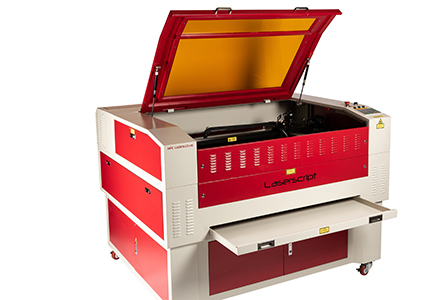CO2 laser engraving and cutting safely
CO2 laser engraving and cutting machines are now in extensive use in many different applications and can present hazards if not operated correctly. When selected and operated correctly, these machines can provide safe and reliable operation for many years.

Monday, 25 Feb 2019 15:14 GMT

Laser engraving and cutting machines are popular due to their flexibility and ease of operation, but can pose serious safety risks when not operated correctly
Having traded in the laser cutter and engraver industry since 2006, HPC Laser advises users to be mindful of dangers such as optical hazards, fire risks, material hazards, and the importance of CE compliance.
Rather than the visible red laser used for positioning, it is the invisible CO2 laser beam that poses the biggest hazard. HPC Laser says: “Similar to the way in which the sun’s rays can be focused and intensified using a magnifying glass, CO2 laser engraving and cutting machines work by passing this invisible laser beam of typically 6-7mm diameter through a focusing lens.
“This reduces the beam diameter down to only microns at the correct focal height and increases the intensity of the beam sufficiently to enable cutting and engraving of suitable materials. Once the unfocused beam has passed the focal point it begins to diverge, weaken and scatter around the machine cabinet.”

Whilst cutting some materials such as wood and plastics, potentially flammable deposits can collect on the machine bed”
It is the unfocused beam that HPC Laser says is the more hazardous of the two, due to its ability to travel long distances whilst losing only a small proportion of its power.
In order to reduce risk of fire whilst operating laser engraving and cutting machines, the firm advices regular checks of the air assist compressor. Ensuring the machines are as clean as possible is also an important step to reducing risk of fire.
“Whilst cutting some materials such as wood and plastics, potentially flammable deposits can collect on the machine bed,” says HPC Laser. “If they are allowed to accumulate these can increase the risk of ignition. Addressing this risk is extremely straightforward – just clean these deposits from the machine bed on a regular basis,” the firm continues.

HPC
Lasers 2019 range of Laserscript engraving and cutting machines now incorporate
Allen Bradley CE marked safety switches
Due to the flexibility of such machines, it is important to remember to safely process all materials used. “PVC produces hydrochloric acid, carbon monoxide, dioxins and chlorinated furans when burned and can seriously damage the machine but more significantly present significant health risks to any personnel in the vicinity of the machine,” says HPC Laser.
CE marking is a certification mark that indicates conformity with health, safety, and environmental protection standards for products sold within the European Economic Area. According to HPC Laser, buyers of laser machines often overlook the matter of compliance with the appropriate CE safety standards.
The firm says: “The relative ease of buying potentially non-compliant and hazardous machines either directly from an overseas manufacturer or through a UK supplier brings with it a potentially serious safety risk.”
Is your firm operating its laser engraving and cutting machines as safely as possible? Email carys@linkpublishing.co.uk or head over to Twitter to have your say.